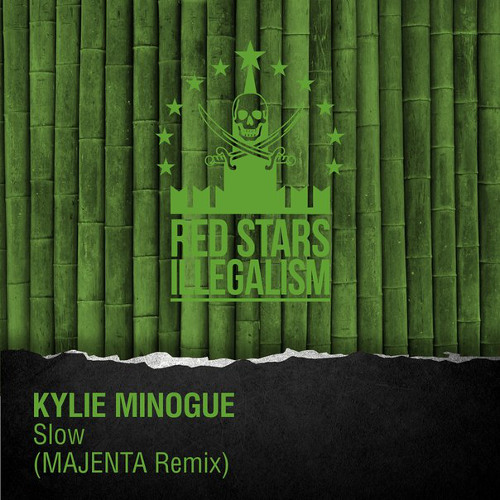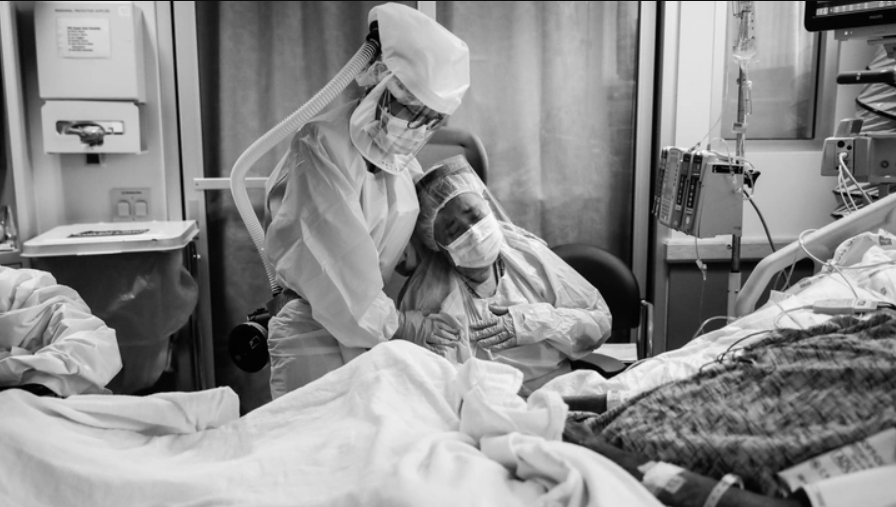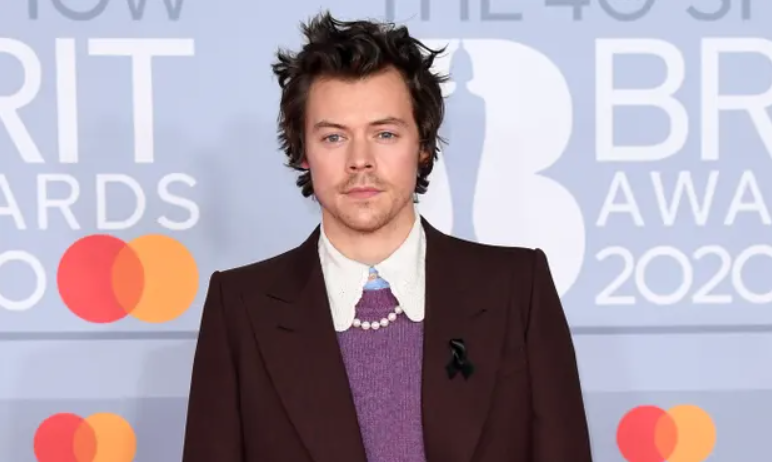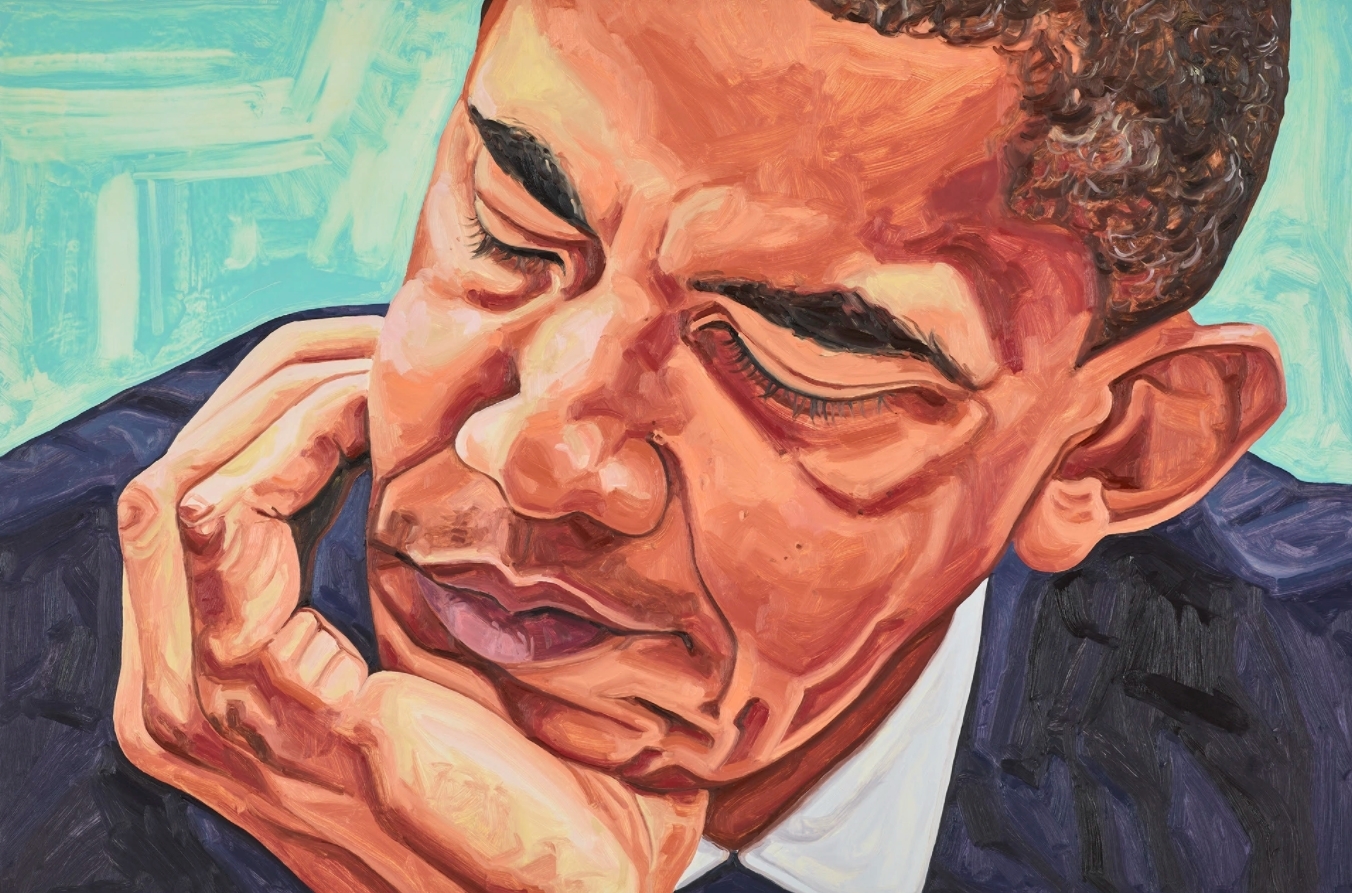Welcome to DU!
The truly grassroots left-of-center political community where regular people, not algorithms, drive the discussions and set the standards.
Join the community:
Create a free account
Support DU (and get rid of ads!):
Become a Star Member
Latest Breaking News
General Discussion
The DU Lounge
All Forums
Issue Forums
Culture Forums
Alliance Forums
Region Forums
Support Forums
Help & Search
Celerity
Celerity's Journal
Celerity's Journal
November 18, 2020


these 2 fuckers need to be clapped in irons for sedition
make extreme examples of them or more and more will follow as surely as night follows day

November 17, 2020

The “buy now, pay later” firm has grown rapidly
https://www.economist.com/finance-and-economics/2020/11/12/klarna-a-swedish-payments-unicorn-wants-to-conquer-america

As a child, when you see your parents struggling, it creates a drive,” says Sebastian Siemiatkowski, the chief executive and co-founder of Klarna, an online-payment-processing firm. His family moved to Sweden from Poland in 1981, the year he was born; his university-educated father was unemployed for long spells or just got by behind the wheel of a cab. The experience nurtured a strong ambition “to fix the economy for the family”. Today, just shy of 40, Mr Siemiatkowksi is at the helm of one of Europe’s biggest fintech firms. A funding round in September raised $650m and valued Klarna at $10.65bn. Investors include Sequoia Capital, a venture-capital firm; Visa, a credit-card firm; and Snoop Dogg, a rapper who performs as “Smoooth Dogg” in a pepto-pink ad for the payments firm. Having gained a foothold in Europe, Klarna has its sights set on America.
Klarna is one of several “buy now, pay later” (bnpl) services that have grown rapidly in recent years. Its attraction, for both online retailers and their customers, is simplicity. Instead of entering their card details at checkout, shoppers sign up to Klarna’s app with their email and delivery address, and leave payment to be made in 14 or 30 days. Klarna pays the retailer in the meantime, bearing the risk that shoppers do not pay—something few other fintechs do—while charging the merchant a fee. Customers are recognised when they use the app again, without needing to re-enter their details. Algorithms use publicly available credit information and details of the size, type and timing of the purchase to calculate the chance of fraud, and offer extended-payment plans, for a charge.
The ease of the process hugely increases the “conversion” rate—the share of customers who go ahead and buy an item after putting it into their virtual basket. That is why Klarna attracts retailers like bees to a honeypot. It has signed up 200,000 sellers in 17 countries and captured 10% of the e-commerce market in northern Europe. Etsy, an online marketplace for arts-and-crafts items, signed up on October 26th. Last year Klarna’s revenue jumped by almost one-third to Skr7.2bn ($840m) as the value of wares sold through it rose by 32%. Merchant fees are the main source of its income; it also runs checkout infrastructure for some retailers. Late fees from customers make a smaller contribution.
It was Klarna’s success in Britain—where it has almost 10m customers and this year has opened some 95,000 accounts a week—that made it reckon that it could conquer America, where online-payments firms have typically struggled to gain market share. It began 2019 with its splashy “Smoooth Dogg” campaign and poured funds into its operations in New York, Los Angeles and Columbus, Ohio, ahead of its launch in America. The firm now has 9m customers there, and will probably go public there in the not-too-distant future. It is expanding in other ways, too. Back in Europe, it obtained a banking licence in 2017, and has launched new products in some countries, such as a credit card. It has opened a tech hub in Berlin’s trendy Mitte neighbourhood that employs 500. This helps explain why last year Klarna ran its first loss since it was set up in 2005. “Profitability is for later,” says Mr Siemiatkowski. Demand is certainly on Klarna’s side. According to Kaleido Intelligence, a research firm, bnpl will grow to $680bn in transaction value in 2025 worldwide, from $353bn in 2019, driven by young, credit-hungry shoppers. Covid-19 has only accelerated the rise in online shopping.
snip
Klarna, a Swedish payments unicorn, wants to conquer America

The “buy now, pay later” firm has grown rapidly
https://www.economist.com/finance-and-economics/2020/11/12/klarna-a-swedish-payments-unicorn-wants-to-conquer-america

As a child, when you see your parents struggling, it creates a drive,” says Sebastian Siemiatkowski, the chief executive and co-founder of Klarna, an online-payment-processing firm. His family moved to Sweden from Poland in 1981, the year he was born; his university-educated father was unemployed for long spells or just got by behind the wheel of a cab. The experience nurtured a strong ambition “to fix the economy for the family”. Today, just shy of 40, Mr Siemiatkowksi is at the helm of one of Europe’s biggest fintech firms. A funding round in September raised $650m and valued Klarna at $10.65bn. Investors include Sequoia Capital, a venture-capital firm; Visa, a credit-card firm; and Snoop Dogg, a rapper who performs as “Smoooth Dogg” in a pepto-pink ad for the payments firm. Having gained a foothold in Europe, Klarna has its sights set on America.
Klarna is one of several “buy now, pay later” (bnpl) services that have grown rapidly in recent years. Its attraction, for both online retailers and their customers, is simplicity. Instead of entering their card details at checkout, shoppers sign up to Klarna’s app with their email and delivery address, and leave payment to be made in 14 or 30 days. Klarna pays the retailer in the meantime, bearing the risk that shoppers do not pay—something few other fintechs do—while charging the merchant a fee. Customers are recognised when they use the app again, without needing to re-enter their details. Algorithms use publicly available credit information and details of the size, type and timing of the purchase to calculate the chance of fraud, and offer extended-payment plans, for a charge.
The ease of the process hugely increases the “conversion” rate—the share of customers who go ahead and buy an item after putting it into their virtual basket. That is why Klarna attracts retailers like bees to a honeypot. It has signed up 200,000 sellers in 17 countries and captured 10% of the e-commerce market in northern Europe. Etsy, an online marketplace for arts-and-crafts items, signed up on October 26th. Last year Klarna’s revenue jumped by almost one-third to Skr7.2bn ($840m) as the value of wares sold through it rose by 32%. Merchant fees are the main source of its income; it also runs checkout infrastructure for some retailers. Late fees from customers make a smaller contribution.
It was Klarna’s success in Britain—where it has almost 10m customers and this year has opened some 95,000 accounts a week—that made it reckon that it could conquer America, where online-payments firms have typically struggled to gain market share. It began 2019 with its splashy “Smoooth Dogg” campaign and poured funds into its operations in New York, Los Angeles and Columbus, Ohio, ahead of its launch in America. The firm now has 9m customers there, and will probably go public there in the not-too-distant future. It is expanding in other ways, too. Back in Europe, it obtained a banking licence in 2017, and has launched new products in some countries, such as a credit card. It has opened a tech hub in Berlin’s trendy Mitte neighbourhood that employs 500. This helps explain why last year Klarna ran its first loss since it was set up in 2005. “Profitability is for later,” says Mr Siemiatkowski. Demand is certainly on Klarna’s side. According to Kaleido Intelligence, a research firm, bnpl will grow to $680bn in transaction value in 2025 worldwide, from $353bn in 2019, driven by young, credit-hungry shoppers. Covid-19 has only accelerated the rise in online shopping.
snip
November 17, 2020
Released by:
Red Stars Illegalism
Release date:
24 May 2015
Red Stars Records | ВКонтакте
https://vk.com/redstarsrecords
Based off
Kylie ?– Slow
Genre:
Electronic, Pop
Style:
Electro, Synth-pop
Year:
2003



Kylie Minogue - Slow (MAJENTA Remix)
Released by:
Red Stars Illegalism
Release date:
24 May 2015
Red Stars Records | ВКонтакте
https://vk.com/redstarsrecords
Based off
Kylie ?– Slow
Genre:
Electronic, Pop
Style:
Electro, Synth-pop
Year:
2003



November 17, 2020

https://www.theatlantic.com/health/archive/2020/11/third-surge-breaking-healthcare-workers/617091/

On Saturday morning, Megan Ranney was about to put on her scrubs when she heard that Joe Biden had won the presidential election. That day, she treated people with COVID-19 while street parties erupted around the country. She was still in the ER in the late evening when Biden and Vice President–elect Kamala Harris made their victory speeches. These days, her shifts at Rhode Island Hospital are long, and they “are not going to change in the next 73 days,” before Biden becomes president, she told me on Monday. Every time Ranney returns to the hospital, there are more COVID-19 patients. In the months since March, many Americans have habituated to the horrors of the pandemic. They process the election’s ramifications. They plan for the holidays. But health-care workers do not have the luxury of looking away: They’re facing a third pandemic surge that is bigger and broader than the previous two. In the U.S., states now report more people in the hospital with COVID-19 than at any other point this year—and 40 percent more than just two weeks ago.
Emergency rooms are starting to fill again with COVID-19 patients. Utah, where Nathan Hatton is a pulmonary specialist at the University of Utah Hospital, is currently reporting 2,500 confirmed cases a day, roughly four times its summer peak. Hatton says that his intensive-care unit is housing twice as many patients as it normally does. His shifts usually last 12 to 24 hours, but can stretch to 36. “There are times I’ll come in in the morning, see patients, work that night, work all the next day, and then go home,” he told me. I asked him how many such shifts he has had to do. “Too many,” he said. Hospitals have put their pandemic plans into action, adding more beds and creating makeshift COVID-19 wards. But in the hardest-hit areas, there are simply not enough doctors, nurses, and other specialists to staff those beds. Some health-care workers told me that COVID-19 patients are the sickest people they’ve ever cared for: They require twice as much attention as a typical intensive-care-unit patient, for three times the normal length of stay. “It was doable over the summer, but now it’s just too much,” says Whitney Neville, a nurse based in Iowa. “Last Monday we had 25 patients waiting in the emergency department. They had been admitted but there was no one to take care of them.” I asked her how much slack the system has left. “There is none,” she said.

The entire state of Iowa is now out of staffed beds, Eli Perencevich, an infectious-disease doctor at the University of Iowa, told me. Worse is coming. Iowa is accumulating more than 3,600 confirmed cases every day; relative to its population, that’s more than twice the rate Arizona experienced during its summer peak, “when their system was near collapse,” Perencevich said. With only lax policies in place, those cases will continue to rise. Hospitalizations lag behind cases by about two weeks; by Thanksgiving, today’s soaring cases will be overwhelming hospitals that already cannot cope. “The wave hasn’t even crashed down on us yet,” Perencevich said. “It keeps rising and rising, and we’re all running on fear. The health-care system in Iowa is going to collapse, no question.” In the imminent future, patients will start to die because there simply aren’t enough people to care for them. Doctors and nurses will burn out. The most precious resource the U.S. health-care system has in the struggle against COVID-19 isn’t some miracle drug. It’s the expertise of its health-care workers—and they are exhausted.
The struggles of the first two COVID-19 surges in the United States helped hospitals steel themselves for the third. Hardened by the crucible of March and April, New York City built up its ability to spot burgeoning hot spots, trace contacts, and offer places where infected people can isolate. “We’re seeing red flags but we’ve prepared ourselves,” says Syra Madad from NYC Health + Hospitals. Experienced health-care workers are less fearful than they were earlier this year. “We’ve been through this before and we know what we have to do,” says Uché Blackstock, an emergency physician who works in Brooklyn. And with the new generation of rapid tests, Blackstock says she can now tell patients if they have the coronavirus within minutes—a huge improvement over the spring, when tests were scarce and slow. Smaller clinics, nursing homes, and long-term-care facilities are still struggling to provide personal protective equipment, including gloves and masks. “About a third are completely out of at least one type of PPE” despite having COVID-19 cases, says Esther Choo, a physician at Oregon Health and Science University and a founder of Get Us PPE. But larger hospitals are doing better, having built up stockpiles and backup plans in case supply chains become strained again. “The hospital is probably the safest place to work in Iowa, because we actually have PPE,” Perencevich said.
snip
More people than ever are hospitalized with COVID-19. Health-care workers can't go on like this.

https://www.theatlantic.com/health/archive/2020/11/third-surge-breaking-healthcare-workers/617091/

On Saturday morning, Megan Ranney was about to put on her scrubs when she heard that Joe Biden had won the presidential election. That day, she treated people with COVID-19 while street parties erupted around the country. She was still in the ER in the late evening when Biden and Vice President–elect Kamala Harris made their victory speeches. These days, her shifts at Rhode Island Hospital are long, and they “are not going to change in the next 73 days,” before Biden becomes president, she told me on Monday. Every time Ranney returns to the hospital, there are more COVID-19 patients. In the months since March, many Americans have habituated to the horrors of the pandemic. They process the election’s ramifications. They plan for the holidays. But health-care workers do not have the luxury of looking away: They’re facing a third pandemic surge that is bigger and broader than the previous two. In the U.S., states now report more people in the hospital with COVID-19 than at any other point this year—and 40 percent more than just two weeks ago.
Emergency rooms are starting to fill again with COVID-19 patients. Utah, where Nathan Hatton is a pulmonary specialist at the University of Utah Hospital, is currently reporting 2,500 confirmed cases a day, roughly four times its summer peak. Hatton says that his intensive-care unit is housing twice as many patients as it normally does. His shifts usually last 12 to 24 hours, but can stretch to 36. “There are times I’ll come in in the morning, see patients, work that night, work all the next day, and then go home,” he told me. I asked him how many such shifts he has had to do. “Too many,” he said. Hospitals have put their pandemic plans into action, adding more beds and creating makeshift COVID-19 wards. But in the hardest-hit areas, there are simply not enough doctors, nurses, and other specialists to staff those beds. Some health-care workers told me that COVID-19 patients are the sickest people they’ve ever cared for: They require twice as much attention as a typical intensive-care-unit patient, for three times the normal length of stay. “It was doable over the summer, but now it’s just too much,” says Whitney Neville, a nurse based in Iowa. “Last Monday we had 25 patients waiting in the emergency department. They had been admitted but there was no one to take care of them.” I asked her how much slack the system has left. “There is none,” she said.

The entire state of Iowa is now out of staffed beds, Eli Perencevich, an infectious-disease doctor at the University of Iowa, told me. Worse is coming. Iowa is accumulating more than 3,600 confirmed cases every day; relative to its population, that’s more than twice the rate Arizona experienced during its summer peak, “when their system was near collapse,” Perencevich said. With only lax policies in place, those cases will continue to rise. Hospitalizations lag behind cases by about two weeks; by Thanksgiving, today’s soaring cases will be overwhelming hospitals that already cannot cope. “The wave hasn’t even crashed down on us yet,” Perencevich said. “It keeps rising and rising, and we’re all running on fear. The health-care system in Iowa is going to collapse, no question.” In the imminent future, patients will start to die because there simply aren’t enough people to care for them. Doctors and nurses will burn out. The most precious resource the U.S. health-care system has in the struggle against COVID-19 isn’t some miracle drug. It’s the expertise of its health-care workers—and they are exhausted.
The struggles of the first two COVID-19 surges in the United States helped hospitals steel themselves for the third. Hardened by the crucible of March and April, New York City built up its ability to spot burgeoning hot spots, trace contacts, and offer places where infected people can isolate. “We’re seeing red flags but we’ve prepared ourselves,” says Syra Madad from NYC Health + Hospitals. Experienced health-care workers are less fearful than they were earlier this year. “We’ve been through this before and we know what we have to do,” says Uché Blackstock, an emergency physician who works in Brooklyn. And with the new generation of rapid tests, Blackstock says she can now tell patients if they have the coronavirus within minutes—a huge improvement over the spring, when tests were scarce and slow. Smaller clinics, nursing homes, and long-term-care facilities are still struggling to provide personal protective equipment, including gloves and masks. “About a third are completely out of at least one type of PPE” despite having COVID-19 cases, says Esther Choo, a physician at Oregon Health and Science University and a founder of Get Us PPE. But larger hospitals are doing better, having built up stockpiles and backup plans in case supply chains become strained again. “The hospital is probably the safest place to work in Iowa, because we actually have PPE,” Perencevich said.
snip
November 17, 2020
https://www.theguardian.com/lifeandstyle/2020/nov/16/harry-styles-vogue-cover-dress

On Friday, storied fashion publication US Vogue made history by featuring British pop singer (and former One Direction heartthrob) Harry Styles as its first-ever male cover star. The cover immediately sparked passionate conversations around masculinity and gendered dressing: Styles dons a voluminous periwinkle blue gown paired with a black tuxedo jacket (both designed by Gucci). The image felt representative of a growing exploration of gender-fluidity and non-binary dressing taking place, popular among the very millennial and Gen-Z shoppers Vogue is targeted towards. However, prominent conservatives – from Candice Owens to Ben Shapiro – voiced disapproval of Styles wearing dresses. Owens wrote on her Twitter page Friday evening: “Bring back manly men.”
https://twitter.com/RealCandaceO/status/1327691891303976961
https://twitter.com/voguemagazine/status/1327240359898992646
“There is no society that can survive without strong men,” Owens, a rightwing media powerhouse, said. “The East knows this. In the west, the steady feminization of our men at the same time that Marxism is being taught to our children is not a coincidence. It is an outright attack.” [sic] Ben Shapiro, a conservative pundit, appeared to agree with Owens’ attacks. He shared her tweet and added: “Anyone who pretends this is not a referendum on masculinity for men to don floofy dresses is treating you like a full-on idiot.”
https://twitter.com/benshapiro/status/1328343297367138304
These comments fit in with how contested and divisive debates around gender expression have become in the US, even when a massively popular musician such as Styles, who identifies as cisgender, engages in progressive developments. This is not the first time Styles has played around with fashion in bold ways. The singer wore a black dress by the Japanese brand Commes Des Garçons on the cover of the Guardian Weekend and defended the queer aesthetics of his visual work. “I’m not just sprinkling in sexual ambiguity to be interesting,” he said. “I want things to look a certain way. Not because it makes me look gay, or it makes me look straight, or it makes me look bisexual, but because I think it looks cool.”
Fellow Hollywood stars were quick to come to Styles’ defence. Olivia Wilde, who is currently directing a Styles-led film, replied to Owens’ tweets with: “You’re pathetic.” And The Good Place actress Jameela Jamil tweeted out in Styles’ defence: “Manly is whatever you want it to be.” Meanwhile, others have argued Styles cover may not be enough for increasing acceptance towards non-binary expression and identities. “Harry Styles’ Vogue cover may be historic, but it isn’t radical,” the Daily Beast declared in a headline. If this is the furore a white, cis man wearing a dress on Vogue breeds, it is hard to imagine what a model from a marginalized background – say, a trans woman of colour (which Vogue has yet to feature on its cover) – would face.
snip
Harry Styles wore a dress on the cover of Vogue - and US rightwingers lost it
The magazine made history by featuring the musician as its first-ever male cover star – but prominent conservatives voiced disapproval over what he was wearinghttps://www.theguardian.com/lifeandstyle/2020/nov/16/harry-styles-vogue-cover-dress

On Friday, storied fashion publication US Vogue made history by featuring British pop singer (and former One Direction heartthrob) Harry Styles as its first-ever male cover star. The cover immediately sparked passionate conversations around masculinity and gendered dressing: Styles dons a voluminous periwinkle blue gown paired with a black tuxedo jacket (both designed by Gucci). The image felt representative of a growing exploration of gender-fluidity and non-binary dressing taking place, popular among the very millennial and Gen-Z shoppers Vogue is targeted towards. However, prominent conservatives – from Candice Owens to Ben Shapiro – voiced disapproval of Styles wearing dresses. Owens wrote on her Twitter page Friday evening: “Bring back manly men.”
https://twitter.com/RealCandaceO/status/1327691891303976961
https://twitter.com/voguemagazine/status/1327240359898992646
“There is no society that can survive without strong men,” Owens, a rightwing media powerhouse, said. “The East knows this. In the west, the steady feminization of our men at the same time that Marxism is being taught to our children is not a coincidence. It is an outright attack.” [sic] Ben Shapiro, a conservative pundit, appeared to agree with Owens’ attacks. He shared her tweet and added: “Anyone who pretends this is not a referendum on masculinity for men to don floofy dresses is treating you like a full-on idiot.”
https://twitter.com/benshapiro/status/1328343297367138304
These comments fit in with how contested and divisive debates around gender expression have become in the US, even when a massively popular musician such as Styles, who identifies as cisgender, engages in progressive developments. This is not the first time Styles has played around with fashion in bold ways. The singer wore a black dress by the Japanese brand Commes Des Garçons on the cover of the Guardian Weekend and defended the queer aesthetics of his visual work. “I’m not just sprinkling in sexual ambiguity to be interesting,” he said. “I want things to look a certain way. Not because it makes me look gay, or it makes me look straight, or it makes me look bisexual, but because I think it looks cool.”
Fellow Hollywood stars were quick to come to Styles’ defence. Olivia Wilde, who is currently directing a Styles-led film, replied to Owens’ tweets with: “You’re pathetic.” And The Good Place actress Jameela Jamil tweeted out in Styles’ defence: “Manly is whatever you want it to be.” Meanwhile, others have argued Styles cover may not be enough for increasing acceptance towards non-binary expression and identities. “Harry Styles’ Vogue cover may be historic, but it isn’t radical,” the Daily Beast declared in a headline. If this is the furore a white, cis man wearing a dress on Vogue breeds, it is hard to imagine what a model from a marginalized background – say, a trans woman of colour (which Vogue has yet to feature on its cover) – would face.
snip
November 17, 2020

https://twitter.com/DPRK_News/status/1326930254586277890

Hogs gather around the food trough.
“I saw the chief pig defecate in the trough.” Said Cow
“We are hogs and this is what we eat.” They said, and ate.
“I am a Noted Idiot” said Cow
https://twitter.com/DPRK_News/status/1328420875830378497

Creation of new Media company makes media "Death Star" fully operational for Corpulent Persimmon
Donald Trump, ensuring a boundless feast of the hot diarrhea that his audience craves.https://twitter.com/DPRK_News/status/1326930254586277890

Hogs gather around the food trough.
“I saw the chief pig defecate in the trough.” Said Cow
“We are hogs and this is what we eat.” They said, and ate.
“I am a Noted Idiot” said Cow
https://twitter.com/DPRK_News/status/1328420875830378497

November 17, 2020
https://www.theatlantic.com/ideas/archive/2020/11/why-obama-fears-for-our-democracy/617087/

Barack Obama was describing to me the manner in which the Mongol emperor and war-crimes innovator Genghis Khan would besiege a town. “They gave you two choices,” he said. “‘If you open the gates, we’ll just kill you quickly and take your women and enslave your children, but we won’t slaughter them. But if you hold out, then we’ll slowly boil you in oil and peel off your skin.’” This was not meant to be commentary on the Trump presidency—not directly, at least. In any case, Obama has more respect for Genghis Khan than he has for Donald Trump. He raised the subject of Genghis Khan in order to make a specific, extremely Obama-like point: If you think today’s world is grim, simply cast your mind back 800 years to the steppes of Central Asia. “Compare the degree of brutality and venality and corruption and just sheer folly that you see across human history with how things are now,” he said. “It’s not even close.”
We were sitting at opposite ends of a long table in his office suite in the West End district of Washington. The offices were empty, except for a couple of aides and a discreet Secret Service detail. Obama was in a good mood, happy to discuss the work that has consumed him for more than three years: the writing of A Promised Land, his presidential memoir—or what turns out to be (because he has much to say about many things) the first of two volumes of his presidential memoir. The first volume’s 768 pages carry him from childhood to the bin Laden raid of 2011. A publication date for the next instalment, which will presumably cover such issues as the Syrian civil war, Russia’s invasion of Ukraine, and the Iran nuclear deal, has not yet been announced. A Promised Land is an unusual presidential memoir in many ways: unusually interior, unusually self-critical, unusually modern (this is the first presidential memoir, I believe, to use the term ethereal bisexual to describe an unrequited love interest), and unusually well written. The book does suffer at times from a general too-muchness, and it has its arid stretches, although to be fair, no one has yet invented a way to inject poetry into extended explanations of cap-and-trade, or Mitch McConnell’s motivations.
We covered a lot of ground in our face-to-face discussion, which took place on Wednesday, and in a follow-up call on Friday. The broadest subject of our conversation was the arc of the moral universe: Does it still bend toward justice? Does it even exist? When Obama was elected 12 years ago, the arc seemed more readily visible, at least to that swath of the country interested in seeing someone other than a white male become president. But he now recognizes that the change he represented triggered an almost instantaneous backlash, one that culminated in the “birther” conspiracy that catapulted its prime propagandist, Donald Trump, to the White House. “What I think is indisputable is that I signified a shift in power. Just my mere presence worried folks, in some cases explicitly, in some cases subconsciously,” Obama said. “And then there were folks around to exploit that and tap into that. If a Fox News talking head asks, when Michelle and I dap, give each other a fist bump, ‘Is that a terrorist fist bump?,’ that’s not a particularly subtle reference. If there’s a sign in opposition to the ACA in which I’m dressed as an African witch doctor with a bone through my nose, that’s not a hard thing to interpret.”
For Obama, though, the overarching story of America, and all humanity, is one of fitful progress—and nothing about the past four years has seemed to change his mind. Joe Biden’s election is proof that America moves forward; the persistence of racial animus and resentment-driven populism represents the difficulty of maintaining momentum. Obama’s you-think-you-have-it-so-bad invocation of Genghis Khan was prompted by a passage I read aloud to him. It is a brief peak-Obama, “Ozymandias”-inflected passage about a visit to Egypt. Obama recalls brooding over a face of a forgotten figure etched into an ancient wall, a face that resembled his. “All of it was forgotten now, none of it mattered, the pharaoh, the slave, and the vandal all long turned to dust. Just as every speech I’d delivered, every law I passed and decision I made, would be forgotten. Just as I and all those I loved would someday turn to dust.”
snip
Why Obama Fears for Our Democracy
In an exclusive interview, the former president identifies the greatest threats to the American experiment, explains why he’s still hopeful, and opens up about his new book.https://www.theatlantic.com/ideas/archive/2020/11/why-obama-fears-for-our-democracy/617087/

Barack Obama was describing to me the manner in which the Mongol emperor and war-crimes innovator Genghis Khan would besiege a town. “They gave you two choices,” he said. “‘If you open the gates, we’ll just kill you quickly and take your women and enslave your children, but we won’t slaughter them. But if you hold out, then we’ll slowly boil you in oil and peel off your skin.’” This was not meant to be commentary on the Trump presidency—not directly, at least. In any case, Obama has more respect for Genghis Khan than he has for Donald Trump. He raised the subject of Genghis Khan in order to make a specific, extremely Obama-like point: If you think today’s world is grim, simply cast your mind back 800 years to the steppes of Central Asia. “Compare the degree of brutality and venality and corruption and just sheer folly that you see across human history with how things are now,” he said. “It’s not even close.”
We were sitting at opposite ends of a long table in his office suite in the West End district of Washington. The offices were empty, except for a couple of aides and a discreet Secret Service detail. Obama was in a good mood, happy to discuss the work that has consumed him for more than three years: the writing of A Promised Land, his presidential memoir—or what turns out to be (because he has much to say about many things) the first of two volumes of his presidential memoir. The first volume’s 768 pages carry him from childhood to the bin Laden raid of 2011. A publication date for the next instalment, which will presumably cover such issues as the Syrian civil war, Russia’s invasion of Ukraine, and the Iran nuclear deal, has not yet been announced. A Promised Land is an unusual presidential memoir in many ways: unusually interior, unusually self-critical, unusually modern (this is the first presidential memoir, I believe, to use the term ethereal bisexual to describe an unrequited love interest), and unusually well written. The book does suffer at times from a general too-muchness, and it has its arid stretches, although to be fair, no one has yet invented a way to inject poetry into extended explanations of cap-and-trade, or Mitch McConnell’s motivations.
We covered a lot of ground in our face-to-face discussion, which took place on Wednesday, and in a follow-up call on Friday. The broadest subject of our conversation was the arc of the moral universe: Does it still bend toward justice? Does it even exist? When Obama was elected 12 years ago, the arc seemed more readily visible, at least to that swath of the country interested in seeing someone other than a white male become president. But he now recognizes that the change he represented triggered an almost instantaneous backlash, one that culminated in the “birther” conspiracy that catapulted its prime propagandist, Donald Trump, to the White House. “What I think is indisputable is that I signified a shift in power. Just my mere presence worried folks, in some cases explicitly, in some cases subconsciously,” Obama said. “And then there were folks around to exploit that and tap into that. If a Fox News talking head asks, when Michelle and I dap, give each other a fist bump, ‘Is that a terrorist fist bump?,’ that’s not a particularly subtle reference. If there’s a sign in opposition to the ACA in which I’m dressed as an African witch doctor with a bone through my nose, that’s not a hard thing to interpret.”
For Obama, though, the overarching story of America, and all humanity, is one of fitful progress—and nothing about the past four years has seemed to change his mind. Joe Biden’s election is proof that America moves forward; the persistence of racial animus and resentment-driven populism represents the difficulty of maintaining momentum. Obama’s you-think-you-have-it-so-bad invocation of Genghis Khan was prompted by a passage I read aloud to him. It is a brief peak-Obama, “Ozymandias”-inflected passage about a visit to Egypt. Obama recalls brooding over a face of a forgotten figure etched into an ancient wall, a face that resembled his. “All of it was forgotten now, none of it mattered, the pharaoh, the slave, and the vandal all long turned to dust. Just as every speech I’d delivered, every law I passed and decision I made, would be forgotten. Just as I and all those I loved would someday turn to dust.”
snip
November 17, 2020

Located in Hyogo Prefecture, Japan, Fuseika House by T-Square Design Associates measures only 114 sq.m. but thanks to the possibility of completely opening three facades, feels a whole lot bigger.

Positioned between two rivers, T-Square Design Associates envisioned a house in which air conditioning wasn’t necessary, replaced by the river breeze blowing freely through the property. Fuseika House features a neutral zone between the interior and exterior perimeter bordered by sliding louvre doors. This design allows the residents to control light, wind and even the privacy of the house by moving the doors according to the weather or time of day.

The open perimeter of Fuseika House is made possible by the reinforced concrete structure which forms the main frame of the project. As well as being central to the structure of the property, the raw concrete interiors contrast in texture and colour to the wooden sliding doors and details.


The minimal interiors of the house are matched by the restrained use of materials in the structure: the concrete main frame is accompanied only by wood. This dialled-back use of materials shifts the focus almost entirely to the innovative form of Fuseika House.

Fuseika House Can Be Entirely Opened To Its Surroundings
https://www.opumo.com/magazine/fuseika-house-can-be-entirely-opened-to-its-surroundings/
Located in Hyogo Prefecture, Japan, Fuseika House by T-Square Design Associates measures only 114 sq.m. but thanks to the possibility of completely opening three facades, feels a whole lot bigger.

Positioned between two rivers, T-Square Design Associates envisioned a house in which air conditioning wasn’t necessary, replaced by the river breeze blowing freely through the property. Fuseika House features a neutral zone between the interior and exterior perimeter bordered by sliding louvre doors. This design allows the residents to control light, wind and even the privacy of the house by moving the doors according to the weather or time of day.

The open perimeter of Fuseika House is made possible by the reinforced concrete structure which forms the main frame of the project. As well as being central to the structure of the property, the raw concrete interiors contrast in texture and colour to the wooden sliding doors and details.


The minimal interiors of the house are matched by the restrained use of materials in the structure: the concrete main frame is accompanied only by wood. This dialled-back use of materials shifts the focus almost entirely to the innovative form of Fuseika House.

November 16, 2020
Video
https://www.nytimes.com/2020/11/15/world/middleeast/egypt-discovery-mummies.html

Archaeologists in Egypt have unearthed more than 100 delicately painted wooden coffins, some with mummies inside, and 40 funeral statues in the ancient burial ground of Saqqara, the Egyptian antiquities authorities said, calling the discovery the largest find at the site this year. The sealed, wooden coffins, some containing mummies, date as far back as 2,500 years and are “in perfect condition of preservation,” Khaled el-Enany, the Egyptian minister of tourism and antiquities, told reporters in Saqqara on Saturday. The fine quality of the coffins meant that they were probably the final resting places for the wealthiest citizens, officials said.
Other artifacts discovered include funeral masks, canopic jars and amulets. “This discovery is very important because it proves that Saqqara was the main burial of the 26th Dynasty,” Zahi Hawass, an Egyptologist, told the magazine Egypt Today, referring to the rulers from about the mid 600s B.C. to 525 B.C. It would also enrich existing knowledge about mummifications in that period, he added. The artifacts and coffins will eventually be exhibited at several museums in Egypt, including the Grand Egyptian Museum, a sprawling archaeological center under construction near the Giza Pyramids that is expected to open next year.
Saqqara, a city about 20 miles south of Cairo, is a vast necropolis for the Old Kingdom capital of Memphis, and it has long been the source of major archaeological finds. Made a UNESCO world heritage site in the 1970s, the necropolis holds more than a dozen burial sites, including the Step Pyramid of King Djoser, the first known burial pyramid. In a dramatic flourish at the news conference on Saturday, experts opened a coffin and scanned a mummy with an X-ray, determining it was most likely a man around the age of 40. The discovery announced on Saturday is the most recent in a series of historical finds at the site. Officials said in October that they had found 59 intact coffins.
More discoveries are predicted at the site, with archaeologists expecting to find in 2021 an ancient workshop that prepared bodies for mummification. The latest discovery comes as Egypt is making a concerted effort to draw visitors back to the country, which depends heavily on tourism. Political problems, including a 2011 uprising that toppled the longtime leader Hosni Mubarak, coupled with terrorist attacks and other instability have deterred tourists, and the coronavirus pandemic has dealt another blow. According to a Times database, Egypt has reported 110,547 total virus cases, with an average of 226 new infections per day over the last week. The country reopened its borders to visitors in July.
snip
Egypt Unearths New Mummies Dating Back 2,500 Years
More than 100 painted wooden coffins, many with bodies, were found in the necropolis of Saqqara, officials said. After several recent finds at the site, it’s the largest discovery there this year.Video
https://www.nytimes.com/2020/11/15/world/middleeast/egypt-discovery-mummies.html

Archaeologists in Egypt have unearthed more than 100 delicately painted wooden coffins, some with mummies inside, and 40 funeral statues in the ancient burial ground of Saqqara, the Egyptian antiquities authorities said, calling the discovery the largest find at the site this year. The sealed, wooden coffins, some containing mummies, date as far back as 2,500 years and are “in perfect condition of preservation,” Khaled el-Enany, the Egyptian minister of tourism and antiquities, told reporters in Saqqara on Saturday. The fine quality of the coffins meant that they were probably the final resting places for the wealthiest citizens, officials said.
Other artifacts discovered include funeral masks, canopic jars and amulets. “This discovery is very important because it proves that Saqqara was the main burial of the 26th Dynasty,” Zahi Hawass, an Egyptologist, told the magazine Egypt Today, referring to the rulers from about the mid 600s B.C. to 525 B.C. It would also enrich existing knowledge about mummifications in that period, he added. The artifacts and coffins will eventually be exhibited at several museums in Egypt, including the Grand Egyptian Museum, a sprawling archaeological center under construction near the Giza Pyramids that is expected to open next year.
Saqqara, a city about 20 miles south of Cairo, is a vast necropolis for the Old Kingdom capital of Memphis, and it has long been the source of major archaeological finds. Made a UNESCO world heritage site in the 1970s, the necropolis holds more than a dozen burial sites, including the Step Pyramid of King Djoser, the first known burial pyramid. In a dramatic flourish at the news conference on Saturday, experts opened a coffin and scanned a mummy with an X-ray, determining it was most likely a man around the age of 40. The discovery announced on Saturday is the most recent in a series of historical finds at the site. Officials said in October that they had found 59 intact coffins.
More discoveries are predicted at the site, with archaeologists expecting to find in 2021 an ancient workshop that prepared bodies for mummification. The latest discovery comes as Egypt is making a concerted effort to draw visitors back to the country, which depends heavily on tourism. Political problems, including a 2011 uprising that toppled the longtime leader Hosni Mubarak, coupled with terrorist attacks and other instability have deterred tourists, and the coronavirus pandemic has dealt another blow. According to a Times database, Egypt has reported 110,547 total virus cases, with an average of 226 new infections per day over the last week. The country reopened its borders to visitors in July.
snip
November 15, 2020
"L'accident d'automobile" (1905)
un film des frères Lumière au suspense insoutenable et aux effets spéciaux bluffants ! [version 4K colorisée]
https://twitter.com/VarlanOlivier/status/1327152369306624001
https://twitter.com/VarlanOlivier/status/1327152678280048640
Profile Information
Gender: FemaleHometown: London
Home country: US/UK/Sweden
Current location: Stockholm, Sweden
Member since: Sun Jul 1, 2018, 07:25 PM
Number of posts: 43,299